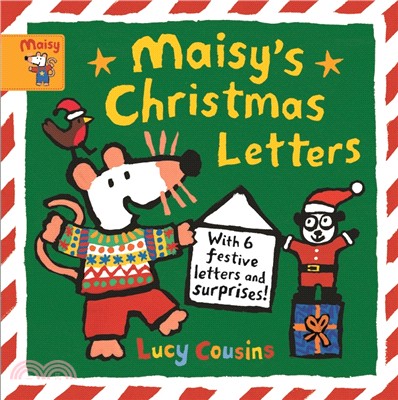Future Research Needs for Angiotensin-Converting Enzyme Inhibitors (Aceis), Angiotensin II Receptor Antagonists (Arbs), or Direct Renin Inhibitors (Dris) for Treating Hypertension
商品資訊
系列名:Future Research Needs Paper
ISBN13:9781484974186
出版社:Createspace Independent Pub
作者:U. S. Department of Health and Human Services (COR); Agency for Healthcare Research and Quality (COR)
出版日:2013/05/14
裝訂/頁數:平裝/60頁
規格:27.9cm*21.6cm*0.4cm (高/寬/厚)
商品簡介
相關商品
商品簡介
Hypertension is the most common reason older adults visit the doctor and advances in antihypertensive therapy have dramatically reduced the associated cardiovascular, cerebrovascular, and renal events. Inhibitors of the renin-angiotensin system (RAS) are the most frequently used medications for blood pressure control and are highly efficacious for reducing hypertension-related outcomes. In 2007, a comparative effectiveness review (CER) sponsored by the Agency for Healthcare Research and Quality (AHRQ) evaluated the long-term benefits and harms of the two most common classes of RAS inhibitors for treating essential hypertension in adults: angiotensin-converting enzyme inhibitors (ACEIs) and angiotensin II receptor blockers/antagonists (ARBs). This 2007 CER was updated in 2011 to incorporate the significant additional direct comparison research published in the interval, and to include the direct renin inhibitors (DRIs), which are the newest class of RAS inhibitors. The 2011 CER addressed the three following Key Questions: KQ 1. For adult patients with essential hypertension, how do ACEIs, ARBs, and DRIs differ in blood pressure control, cardiovascular risk reduction, cardiovascular events, quality of life, and other outcomes? KQ 2. For adult patients with essential hypertension, how do ACEIs, ARBs, and DRIs differ in safety, adverse events, tolerability, persistence with drug therapy, and treatment adherence? KQ 3. Are there subgroups of patients—based on demographic and other characteristics (i.e., age, race, ethnicity, sex, comorbidities, concurrent use of other medications)—for whom ACEIs, ARBs, or DRIs are more effective, are associated with fewer adverse events, or are better tolerated? The results of the CER included 97 studies (36 new since 2007) directly comparing ACEIs versus ARBs and 3 studies directly comparing DRIs to ACEIs or ARBs. The strength of evidence remained high for equivalence between ACEIs and ARBs for blood pressure lowering, and for superiority of ARBs over ACEIs for short-term adverse events (primarily cough). The new evidence did not strengthen the conclusions regarding long-term cardiovascular outcomes, quality of life, progression of renal disease, medication adherence or persistence, rates of angioedema, or differences in key patient subgroups; the strength of evidence for these outcomes remained low to moderate. Evidence on the comparative effectiveness of DRIs versus either ACEIs or ARBs was limited to 3 studies with 2,049 patients and did not allow definitive conclusions on any of the included outcomes. Few studies involved a representative patient sample treated in a typical clinical setting over a long duration; treatment protocols had marked heterogeneity; and significant amounts of data about important outcomes and patient subgroups were missing. Our approach to identifying evidence gaps, prioritizing future research, and developing recommendations for stakeholders is outlined in the following steps. Further detail is provided below. 1. Develop an analytic framework from the original CER in order to understand the clinical and policy context of the review and its initial list of future research needs. 2. Create an initial list of evidence gaps based on the CER organized according to the population, interventions, comparators, and outcomes (PICO) framework. 3. Form a stakeholder group representing appropriate clinician, policymakers, and patient perspectives. 4. Expand the list of evidence gaps based on stakeholder input. 5. Perform an updated review of published literature since the last CER (search last updated in December 2010) and a horizon scan for recently published and ongoing studies that may address the evidence gaps, but which are not included in the current CER. 6. Solicit stakeholder prioritization of the identified research gaps based on the updated literature review. 7. Determine the most appropriate study designs for the highest priority research areas.
主題書展
更多
主題書展
更多書展今日66折
您曾經瀏覽過的商品
購物須知
外文書商品之書封,為出版社提供之樣本。實際出貨商品,以出版社所提供之現有版本為主。部份書籍,因出版社供應狀況特殊,匯率將依實際狀況做調整。
無庫存之商品,在您完成訂單程序之後,將以空運的方式為你下單調貨。為了縮短等待的時間,建議您將外文書與其他商品分開下單,以獲得最快的取貨速度,平均調貨時間為1~2個月。
為了保護您的權益,「三民網路書店」提供會員七日商品鑑賞期(收到商品為起始日)。
若要辦理退貨,請在商品鑑賞期內寄回,且商品必須是全新狀態與完整包裝(商品、附件、發票、隨貨贈品等)否則恕不接受退貨。
























